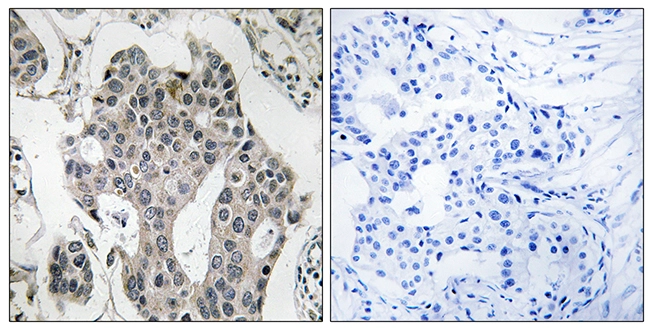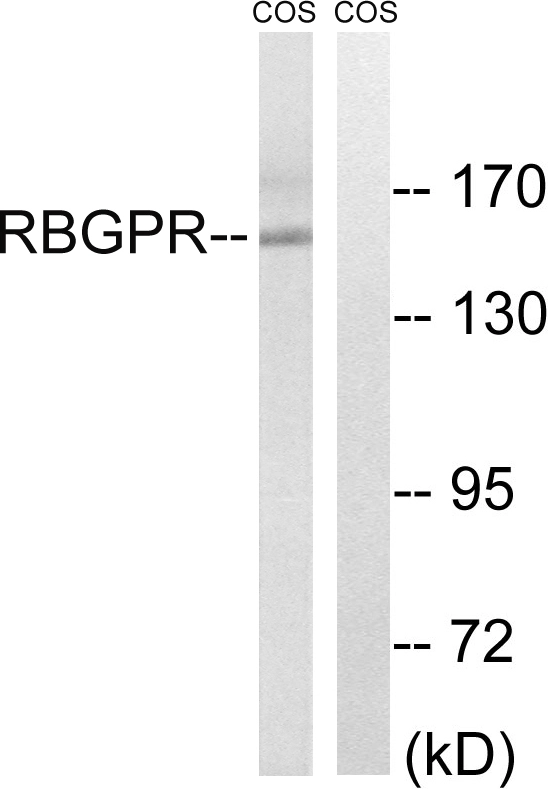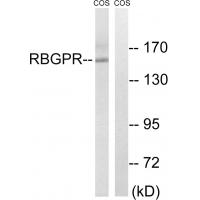
IHC-P analysis of human breast carcinoma tissue using GTX87680 RAB3GAP2 antibody. The picture on the right is blocked with the synthesized peptide.
RAB3GAP2 antibody
GTX87680
ApplicationsWestern Blot, ImmunoHistoChemistry, ImmunoHistoChemistry Paraffin
Product group Antibodies
TargetRAB3GAP2
Overview
- SupplierGeneTex
- Product NameRAB3GAP2 antibody
- Delivery Days Customer9
- Application Supplier NoteWB: 1:500~1:1000. IHC-P: 1:50~1:100. *Optimal dilutions/concentrations should be determined by the researcher.Not tested in other applications.
- ApplicationsWestern Blot, ImmunoHistoChemistry, ImmunoHistoChemistry Paraffin
- CertificationResearch Use Only
- ClonalityPolyclonal
- ConjugateUnconjugated
- Gene ID25782
- Target nameRAB3GAP2
- Target descriptionRAB3 GTPase activating non-catalytic protein subunit 2
- Target synonymsMARTS1, RAB3-GAP150, RAB3GAP150, SPG69, WARBM2, p150, rab3 GTPase-activating protein non-catalytic subunit, RAB3 GTPase activating protein subunit 2 (non-catalytic), RGAP-iso, rab3 GTPase-activating protein 150 kDa subunit, rab3-GAP p150, rab3-GAP regulatory subunit
- HostRabbit
- IsotypeIgG
- Protein IDQ9H2M9
- Protein NameRab3 GTPase-activating protein non-catalytic subunit
- Scientific DescriptionThe protein encoded by this gene belongs to the RAB3 protein family, members of which are involved in regulated exocytosis of neurotransmitters and hormones. This protein forms the Rab3 GTPase-activating complex with RAB3GAP1, where it constitutes the regulatory subunit, whereas the latter functions as the catalytic subunit. This gene has the highest level of expression in the brain, consistent with it having a key role in neurodevelopment. Mutations in this gene are associated with Martsolf syndrome.[provided by RefSeq, Oct 2009]
- Storage Instruction-20°C or -80°C,2°C to 8°C
- UNSPSC12352203
References
- Haines DS, Lee JE, Beauparlant SL, et al. Protein interaction profiling of the p97 adaptor UBXD1 points to a role for the complex in modulating ERGIC-53 trafficking. Mol Cell Proteomics. 2012,11(6):M111.016444. doi: 10.1074/mcp.M111.016444Read this paper







